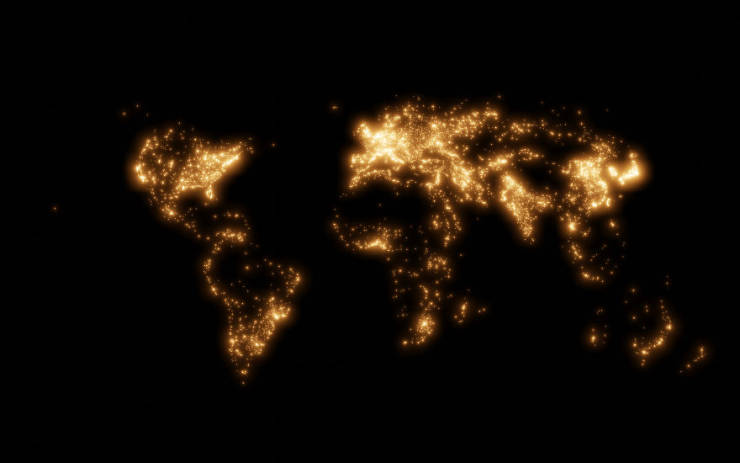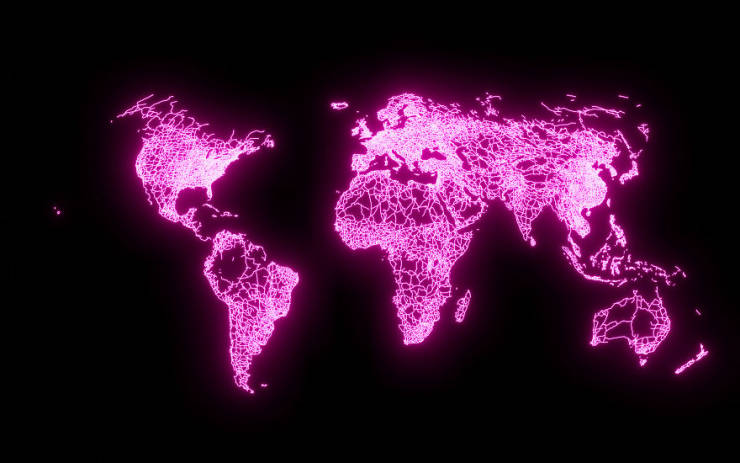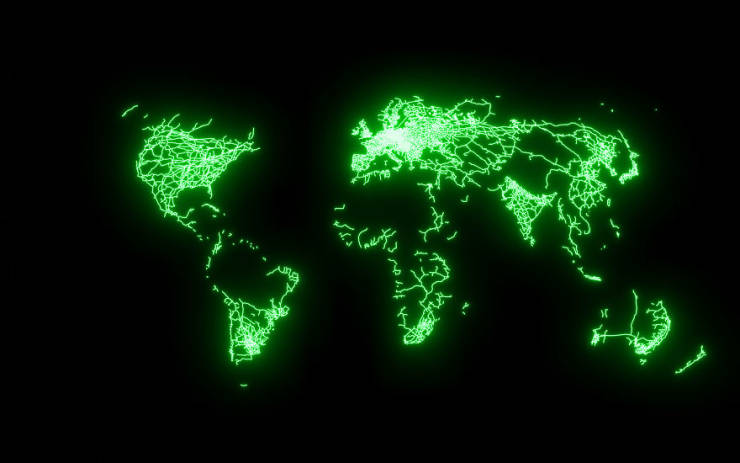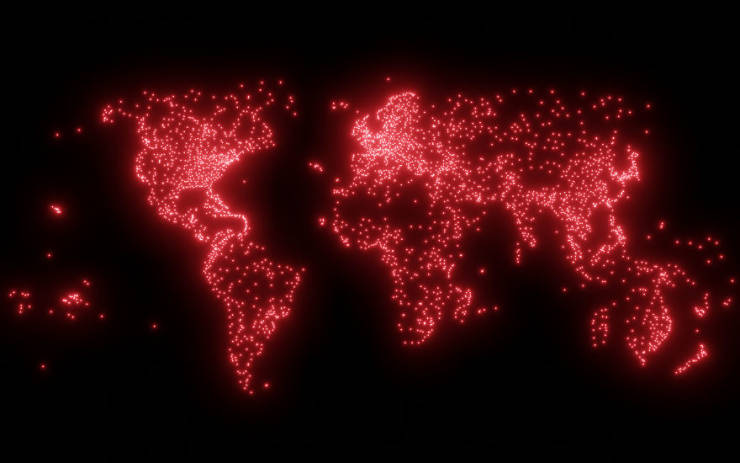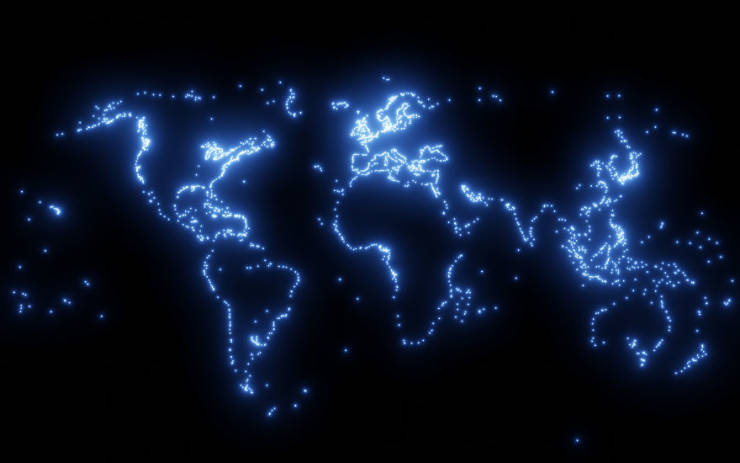Cities
This map shows where people live. You can see the biggest city in the world, Tokyo, shining as one of the brightest parts of the map. Meanwhile, deserts and jungles in Africa, South America and Australia almost completely disappear.
Roads
There are more than 60 million kilometers of roads in the world. On this map, you can see how people have build roads across some of the most inhospitable terrain imaginable. Even in places where no one lives, you can find roads stretching across deserts and mountains to connect people on the other side.
Railroads
This map shows some of the differences between different parts of the world. Europe shines brightest with its advanced network of high speed trains which make it possible to travel almost anywhere without a car. In North America on the other hand, trains are mostly used to carry freight across enormous distances. In Africa, most of the railroads were built by European colonizers to carry goods to the coast to be shipped back to Europe. And in Australia the longest trains in the world with more than 500 cars carry coal and minerals across the outback.
Airports
For some of the most isolated parts of the planet, it’s only possible to travel by air. Cities in the Amazon rain forest, the middle of the Australian Outback, and the Canadian North aren’t connected to the rest of the world by roads or rails. Instead, people, food, and supplies have to travel by air.
Ports
Almost every city in the world is built on either a coastline or a river. For thousands of years the only way to connect different parts of the world was by ship. Even today, most of the food we eat, the clothes we wear, the cars we drive, and the things we buy get brought to us by ship.

